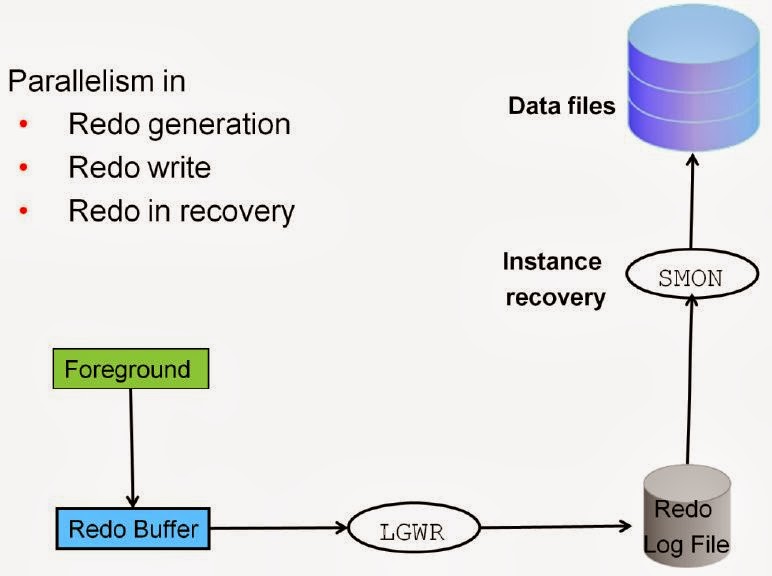To find free space in DBFS (Oracle Database File System) use Oracle packages like dbms_space.space_usage.
SQL> set serveroutput on
SQL> declare
v_segment_size_blocks number;
v_segment_size_bytes number;
v_ number;
v_used_blocks number;
v_used_bytes number;
v_expired_blocks number;
v_expired_bytes number;
v_unexpired_blocks number;
v_unexpired_bytes number;
begin
dbms_space.space_usage ('DBFS_USER', 'LOB_SFS$_FST_1', 'LOB',
v_segment_size_blocks, v_segment_size_bytes,
v_used_blocks, v_used_bytes, v_expired_blocks, v_expired_bytes,
v_unexpired_blocks, v_unexpired_bytes );
dbms_output.put_line('Expired Blocks = '||v_expired_blocks);
dbms_output.put_line('Expired Bytes = '||v_expired_bytes);
dbms_output.put_line('UnExpired Blocks = '||v_unexpired_blocks);
dbms_output.put_line('UnExpired Bytes = '||v_unexpired_bytes);
end;
/
Expired Blocks = 42865646
Expired Bytes = 351155372032
UnExpired Blocks = 26808
UnExpired Bytes = 219611136
PL/SQL procedure successfully completed.
Expired Bytes = 351155372032 + UnExpired Bytes = 219611136) is considered as the free space for DBFSTS (Oracle Database File System Tablespace).
1. Oracle® Database SecureFiles and Large Objects Developer's Guide
12c Release 1 (12.1)
E17605-10
Chapter 10 Using DBFS
URL: http://docs.oracle.com/cd/E16655_01/appdev.121/e17605/adlob_client.htm
2. Oracle® Database SecureFiles and Large Objects Developer's Guide
11g Release 2 (11.2)
E18294-04
Chapter 6 DBFS File System Client
URL: http://docs.oracle.com/cd/E11882_01/appdev.112/e18294/adlob_client.htm#ADLOB0006
Sample Script:
SQL> set serveroutput on
SQL> declare
v_segment_size_blocks number;
v_segment_size_bytes number;
v_ number;
v_used_blocks number;
v_used_bytes number;
v_expired_blocks number;
v_expired_bytes number;
v_unexpired_blocks number;
v_unexpired_bytes number;
begin
dbms_space.space_usage ('DBFS_USER', 'LOB_SFS$_FST_1', 'LOB',
v_segment_size_blocks, v_segment_size_bytes,
v_used_blocks, v_used_bytes, v_expired_blocks, v_expired_bytes,
v_unexpired_blocks, v_unexpired_bytes );
dbms_output.put_line('Expired Blocks = '||v_expired_blocks);
dbms_output.put_line('Expired Bytes = '||v_expired_bytes);
dbms_output.put_line('UnExpired Blocks = '||v_unexpired_blocks);
dbms_output.put_line('UnExpired Bytes = '||v_unexpired_bytes);
end;
/
Sample Out:
Expired Blocks = 42865646
Expired Bytes = 351155372032
UnExpired Blocks = 26808
UnExpired Bytes = 219611136
PL/SQL procedure successfully completed.
Expired Bytes = 351155372032 + UnExpired Bytes = 219611136) is considered as the free space for DBFSTS (Oracle Database File System Tablespace).
Reference / Additional Read
1. Oracle® Database SecureFiles and Large Objects Developer's Guide
12c Release 1 (12.1)
E17605-10
Chapter 10 Using DBFS
URL: http://docs.oracle.com/cd/E16655_01/appdev.121/e17605/adlob_client.htm
2. Oracle® Database SecureFiles and Large Objects Developer's Guide
11g Release 2 (11.2)
E18294-04
Chapter 6 DBFS File System Client
URL: http://docs.oracle.com/cd/E11882_01/appdev.112/e18294/adlob_client.htm#ADLOB0006







